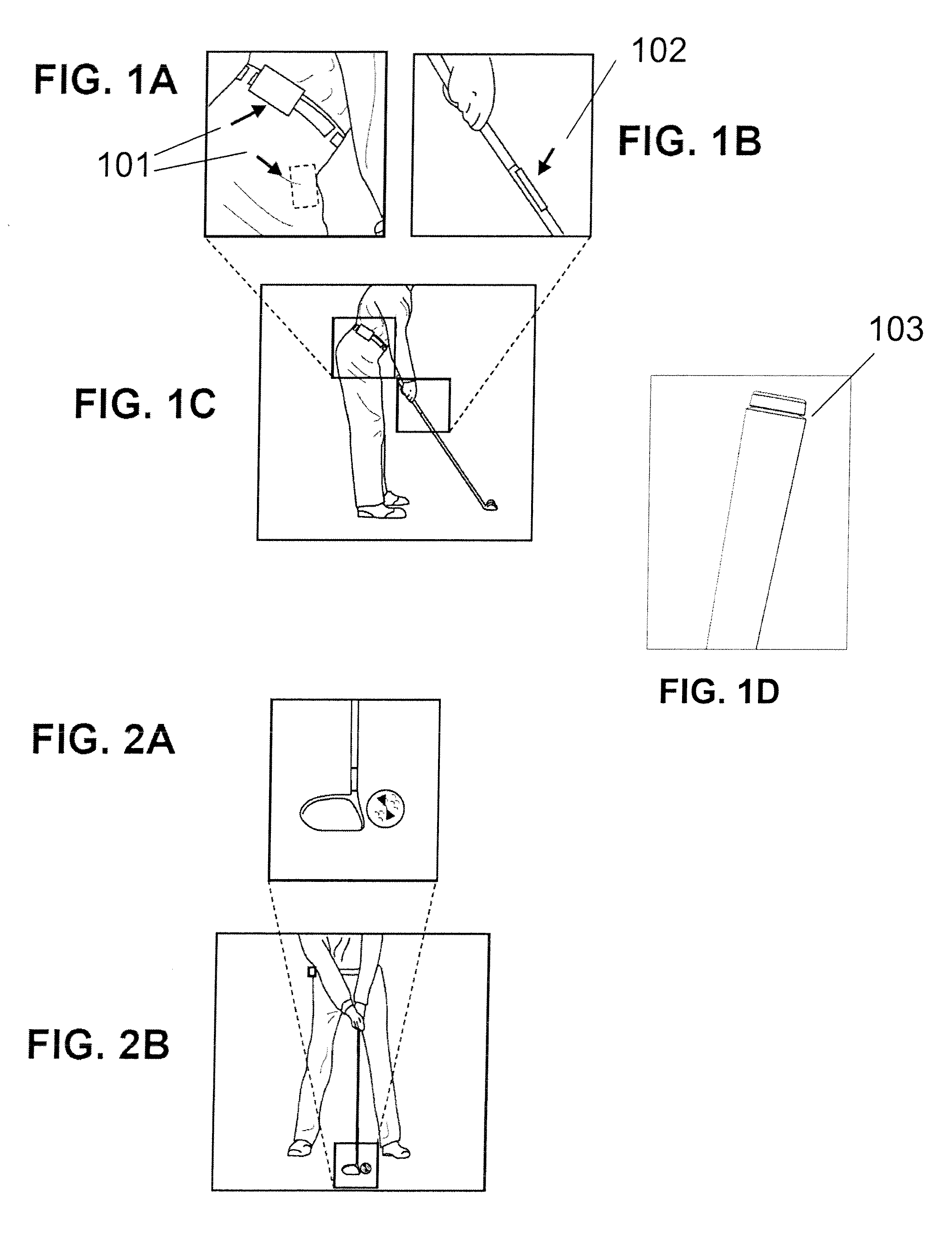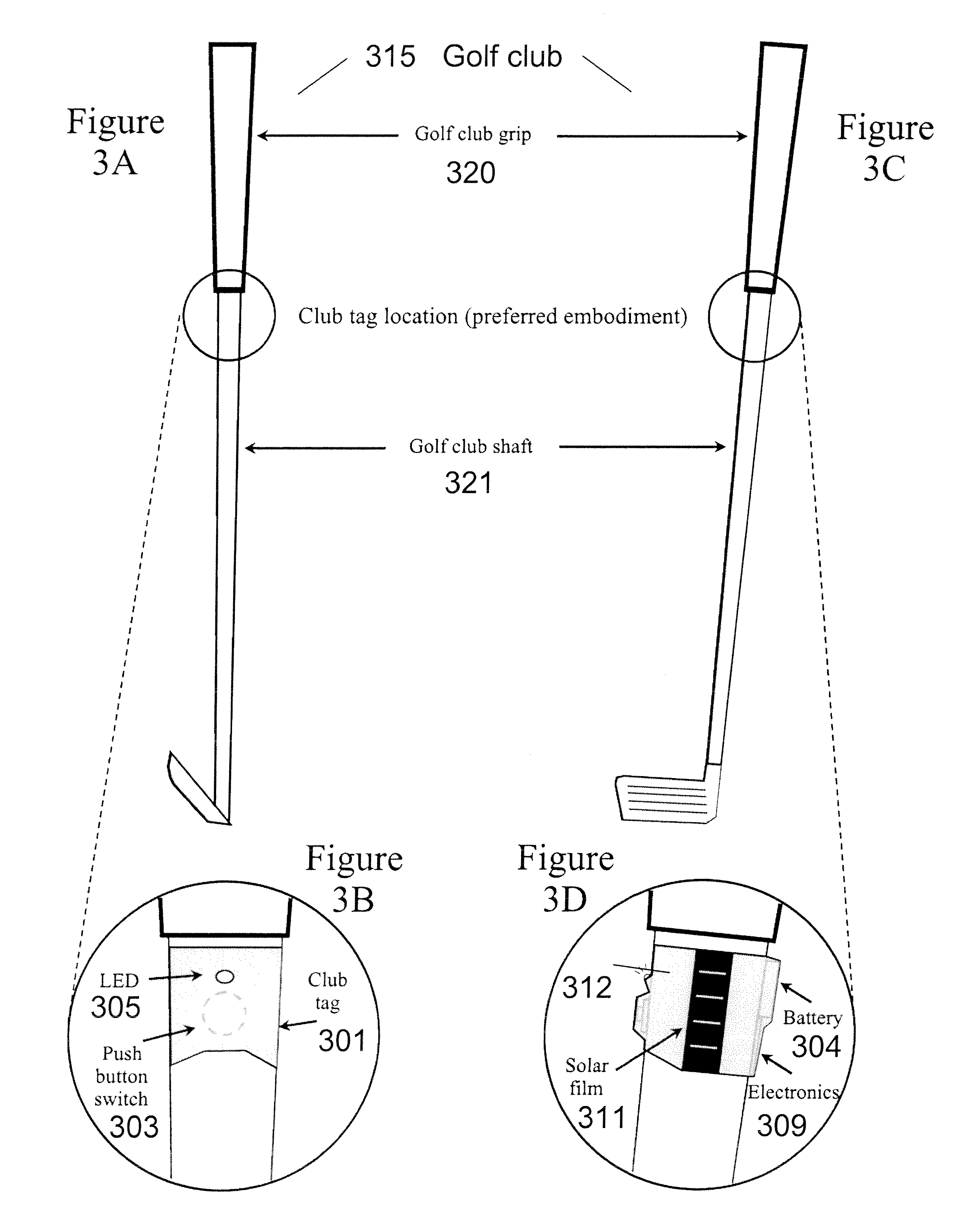Apparatuses, methods and systems relating to semi-automatic golf data collecting and recording
- Summary
- Abstract
- Description
- Claims
- Application Information
AI Technical Summary
Benefits of technology
Problems solved by technology
Method used
Image
Examples
Embodiment Construction
[0058]The present invention is a Golf Data Collection System shown in FIG. 1C that consists of a handheld device shown in FIG. 1A and RFID tags shown in FIGS. 1B and 1D that are attached to a set of golf clubs. The handheld device 101 is a golf GPS device, such as the SkyCaddie, with additional functionality to communicate with the RFID tags 102 and 103. This system combines the GPS golfing and mapping technology of a golf GPS system with semi-automatic RFID tracking of golf equipment to provide data about a round of golf. The system tracks information about a round of golf, such as the club used for each golf shot, and the location of each golf shot overlaid on a map of the golf hole and the number of strokes or score.
[0059]One embodiment of this invention is shown in FIGS. 3A, 3B, 3C, 3D and 4A. A RFID tag 301 is attached to a golf club 315 below the grip 320. The RFID tag is made up of a power source, such as a battery 304, LED 305, switch 303, solar panel 311, and electronics 30...
PUM
 Login to View More
Login to View More Abstract
Description
Claims
Application Information
 Login to View More
Login to View More - R&D
- Intellectual Property
- Life Sciences
- Materials
- Tech Scout
- Unparalleled Data Quality
- Higher Quality Content
- 60% Fewer Hallucinations
Browse by: Latest US Patents, China's latest patents, Technical Efficacy Thesaurus, Application Domain, Technology Topic, Popular Technical Reports.
© 2025 PatSnap. All rights reserved.Legal|Privacy policy|Modern Slavery Act Transparency Statement|Sitemap|About US| Contact US: help@patsnap.com



